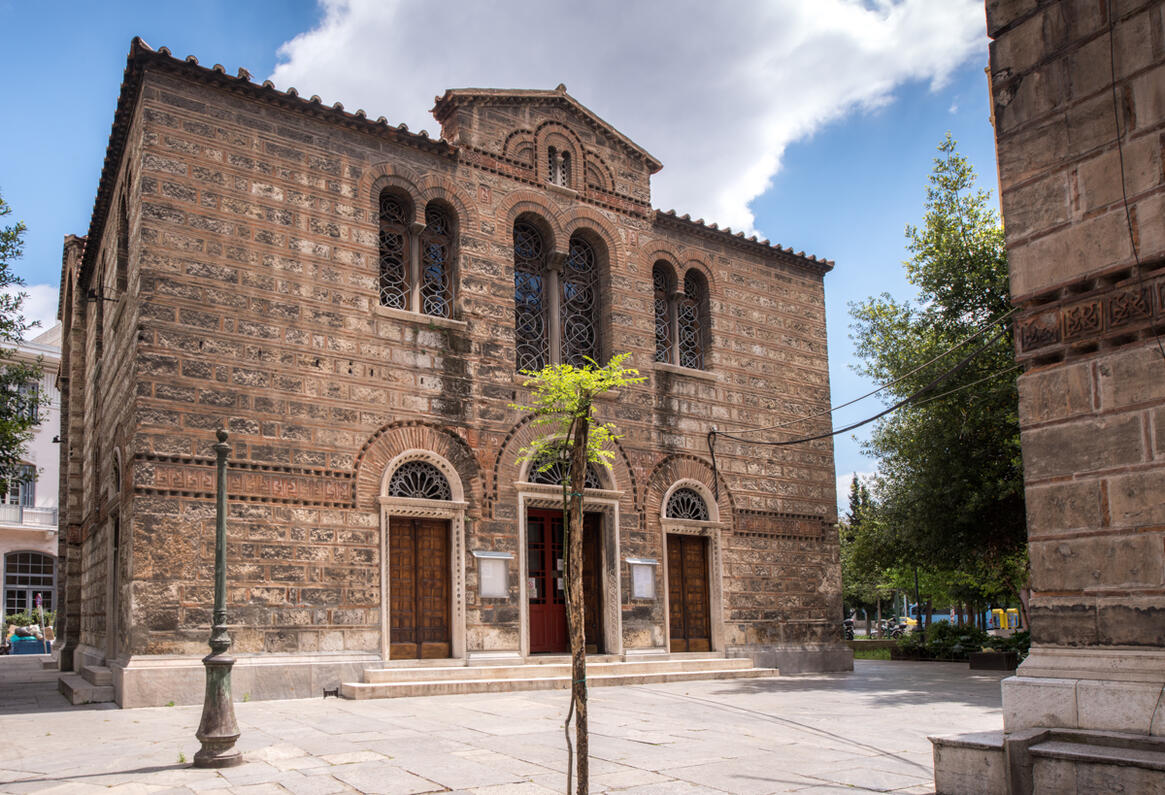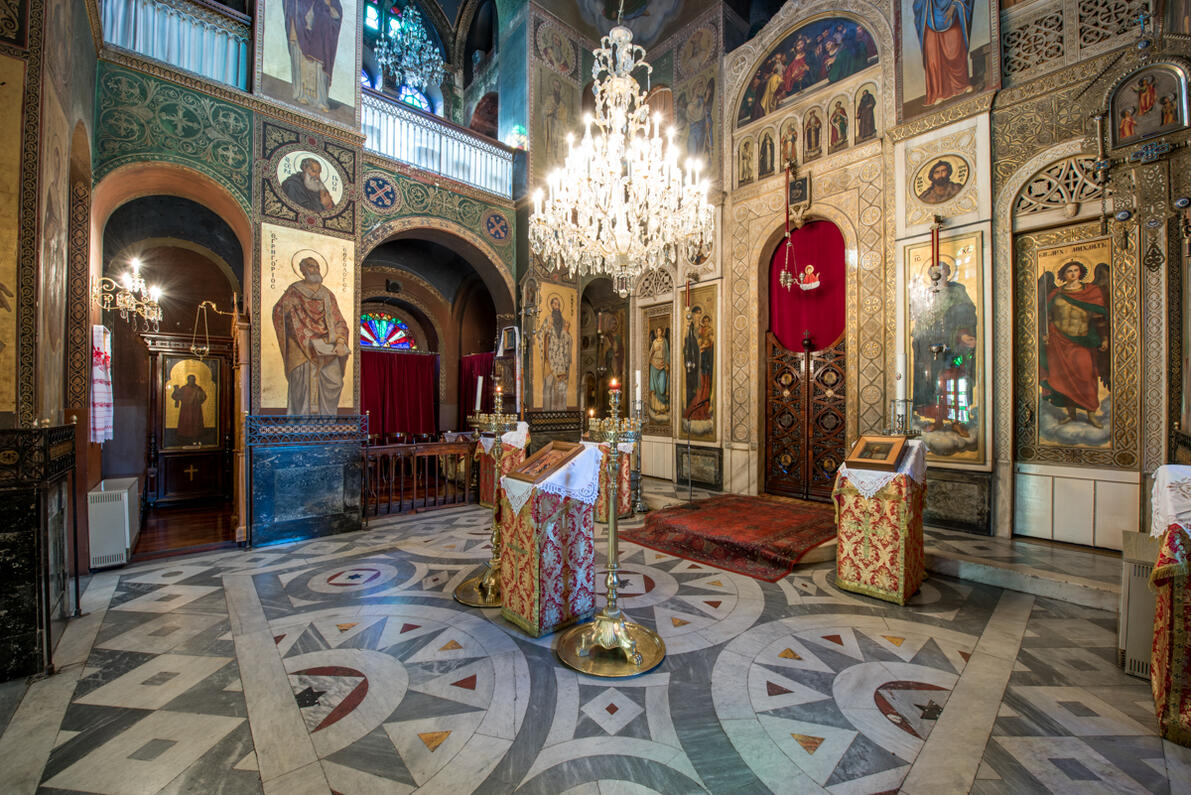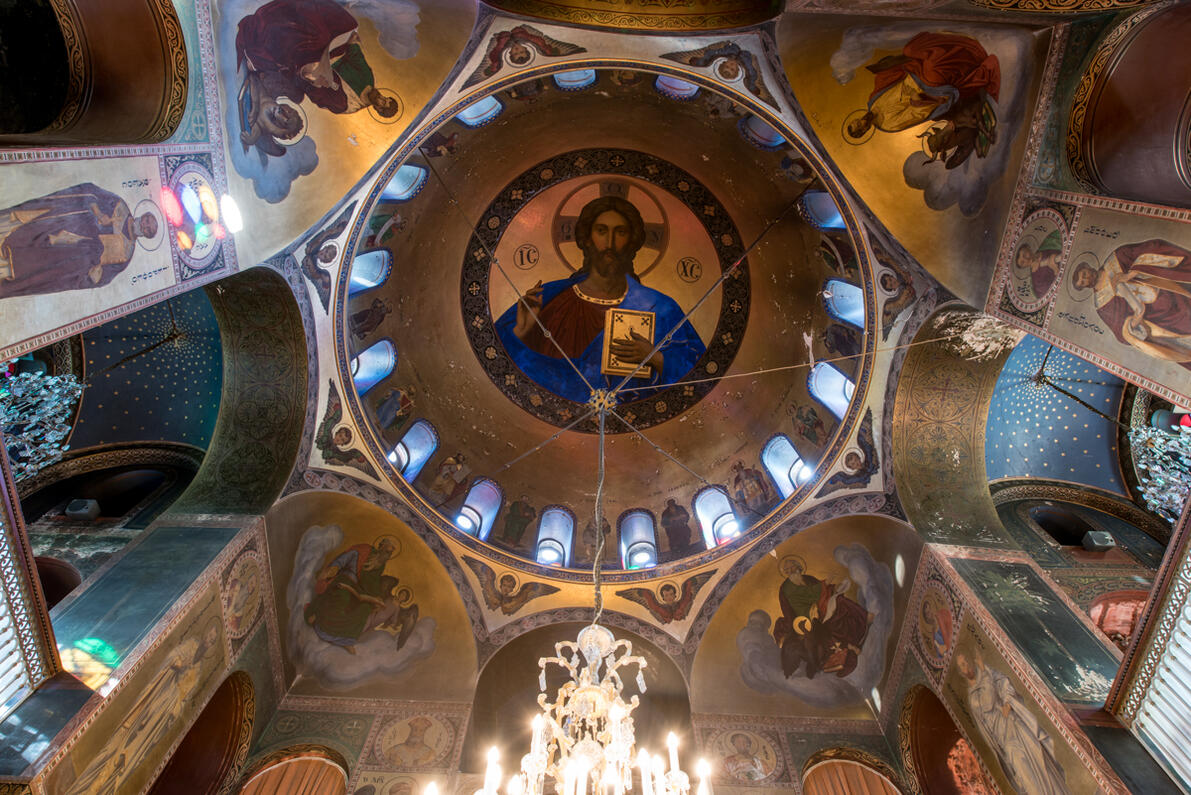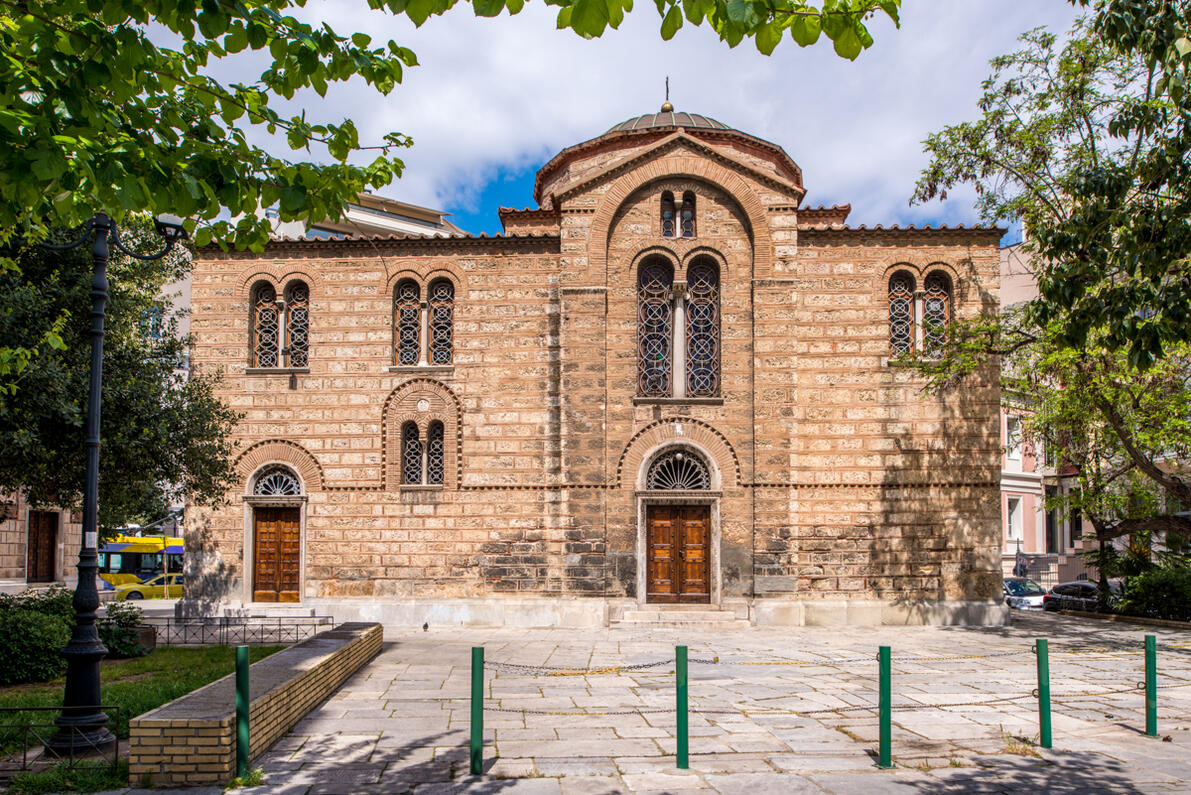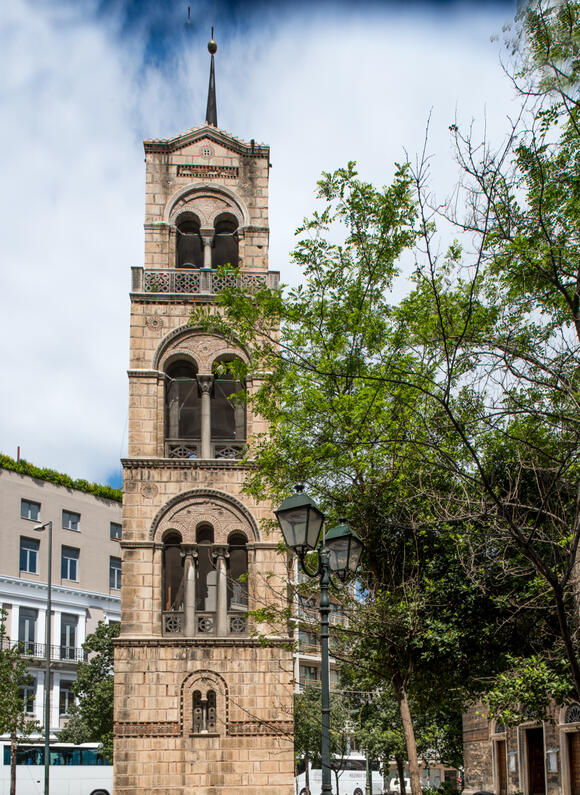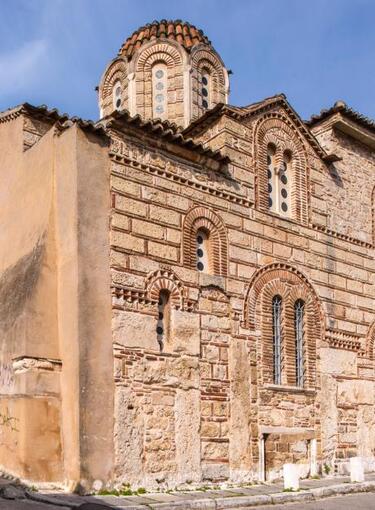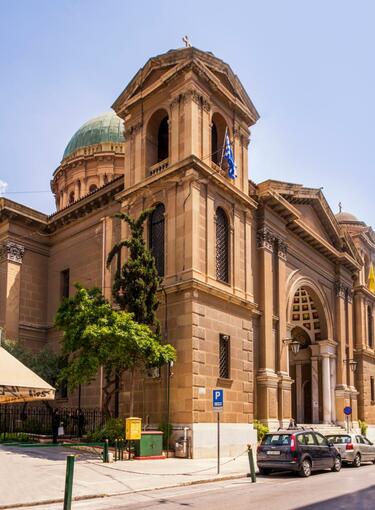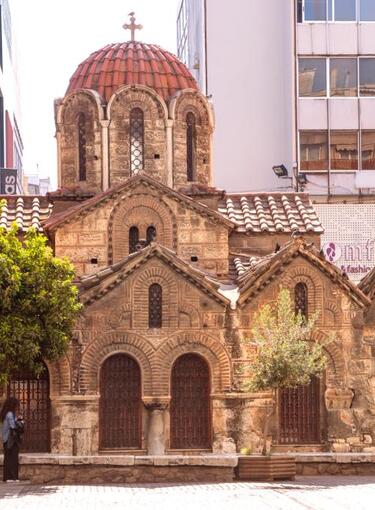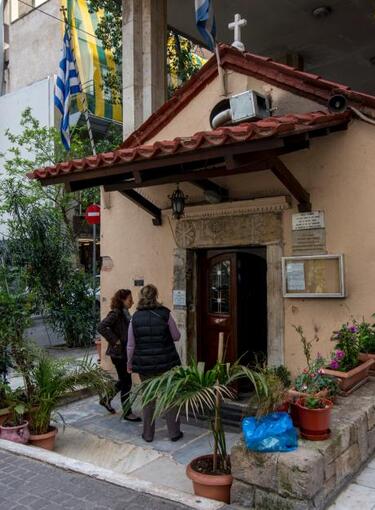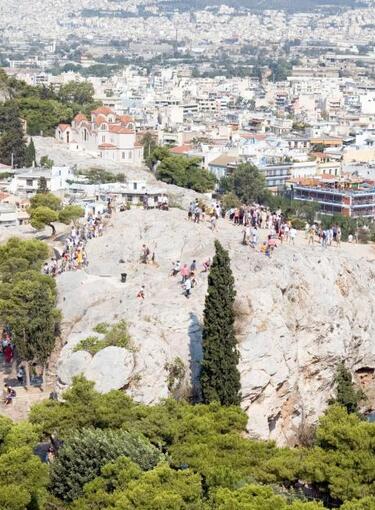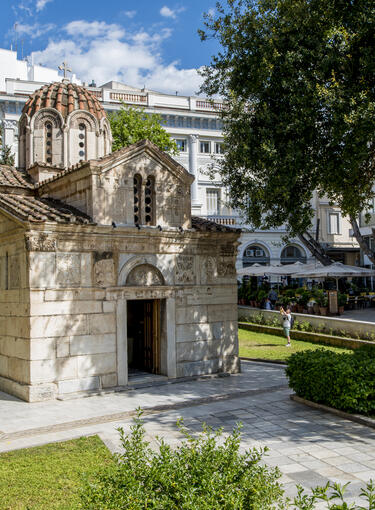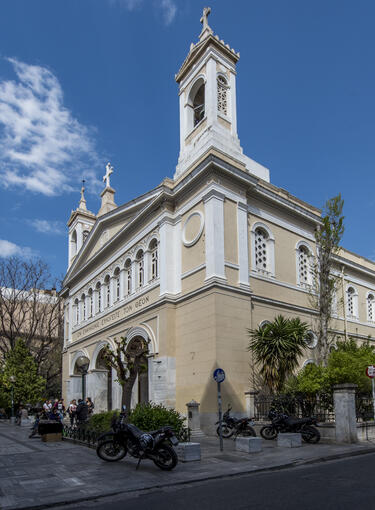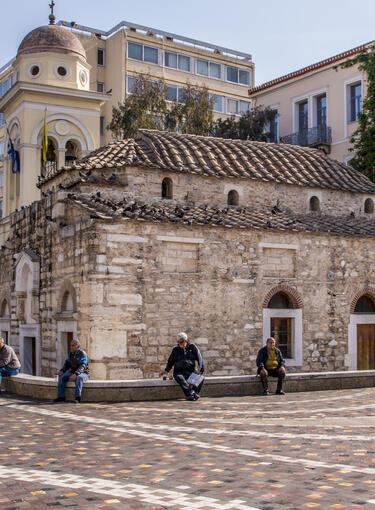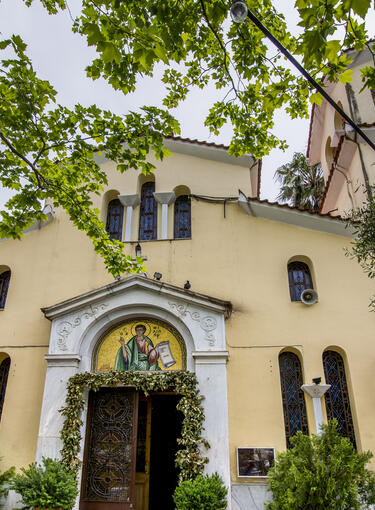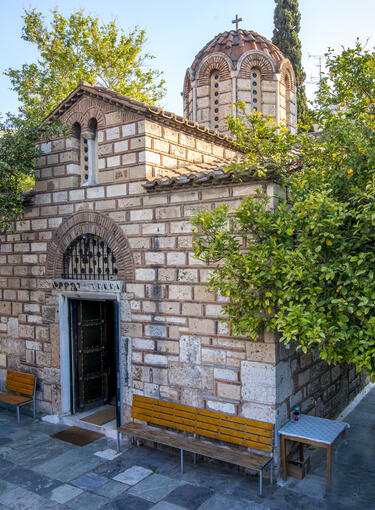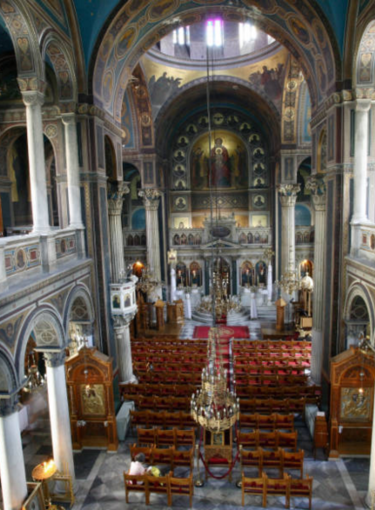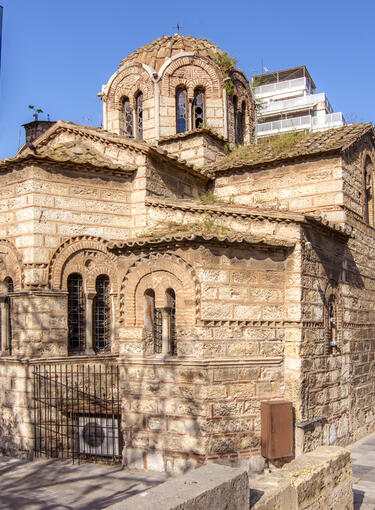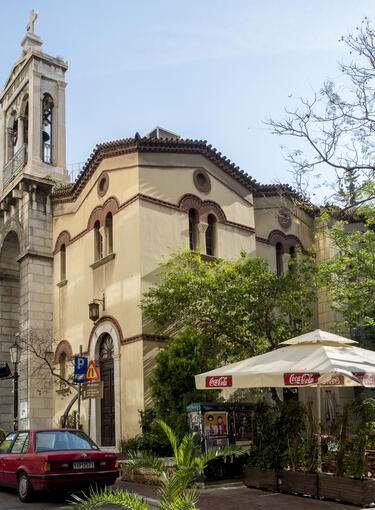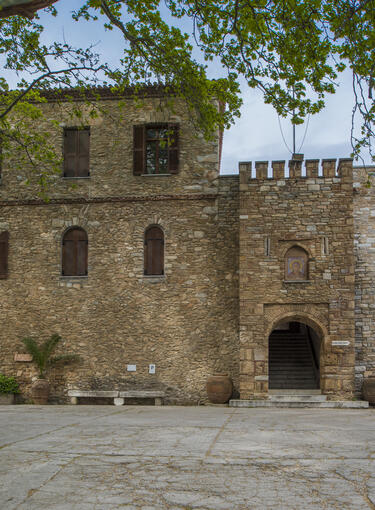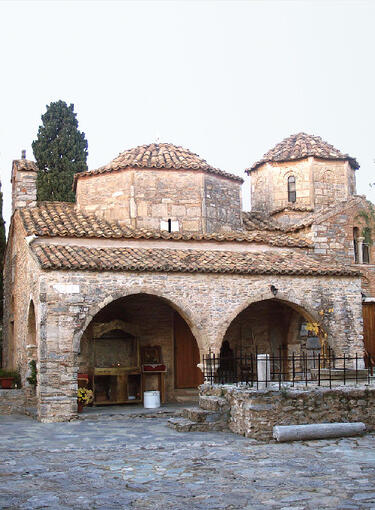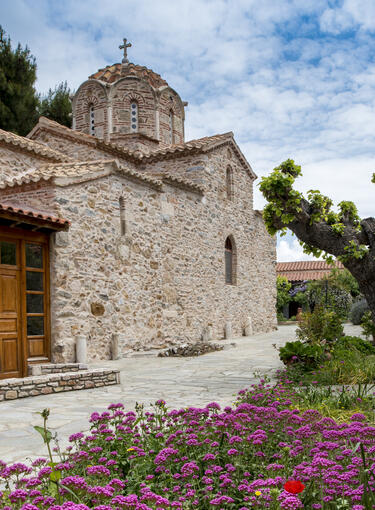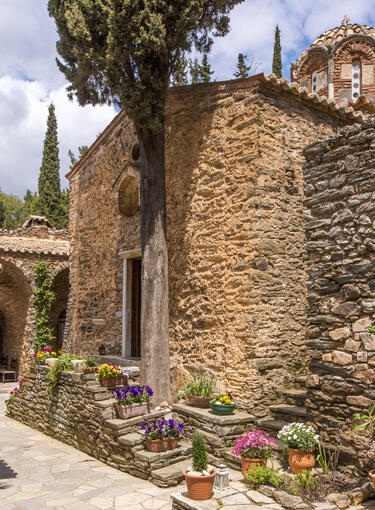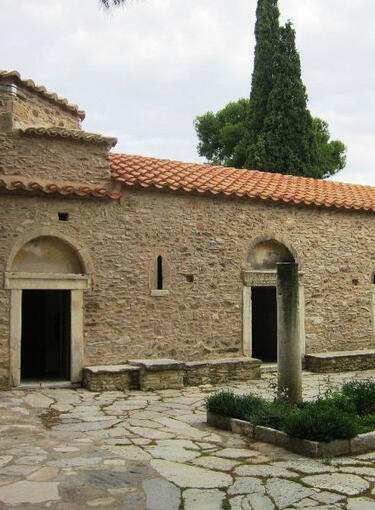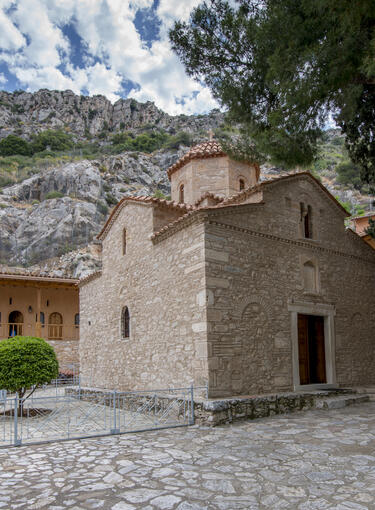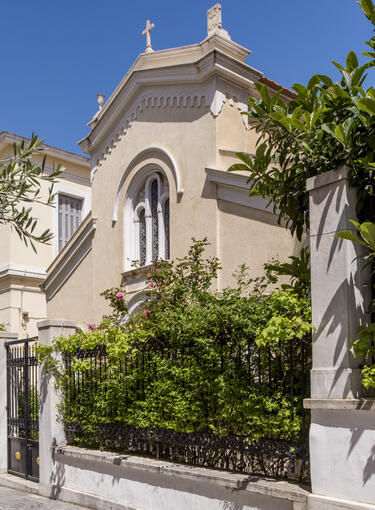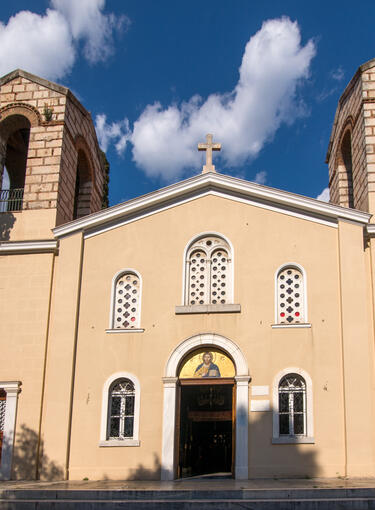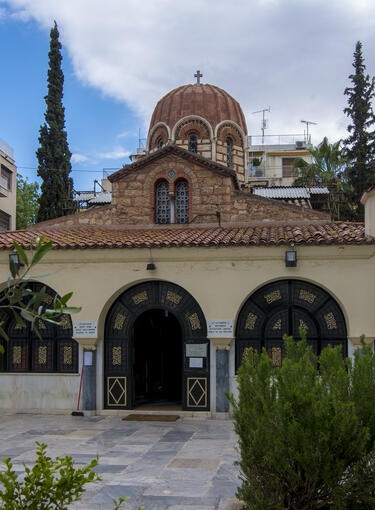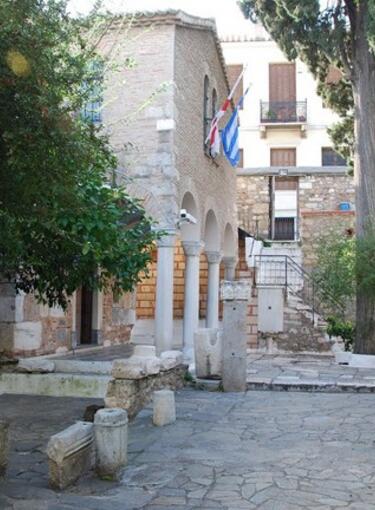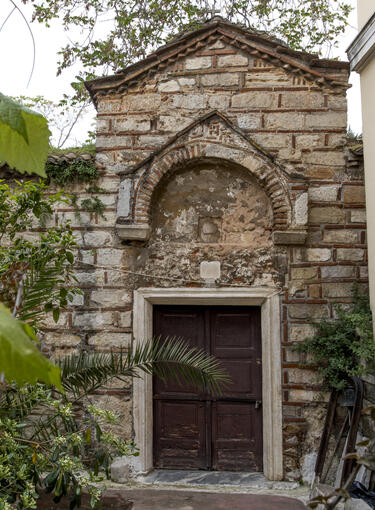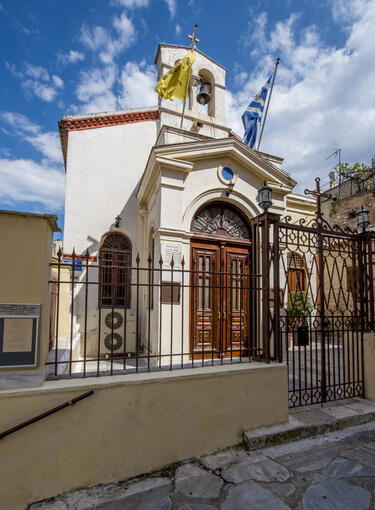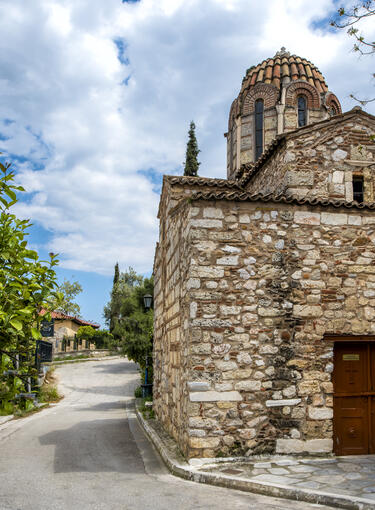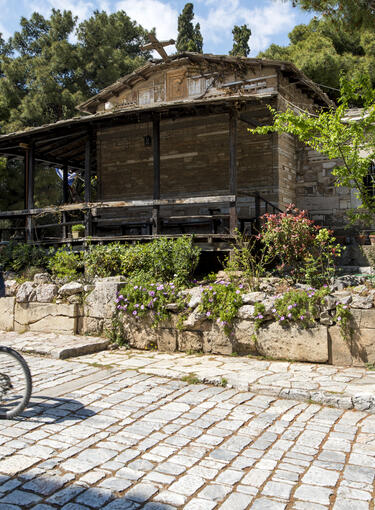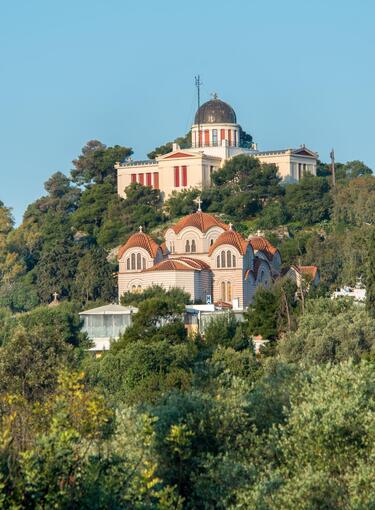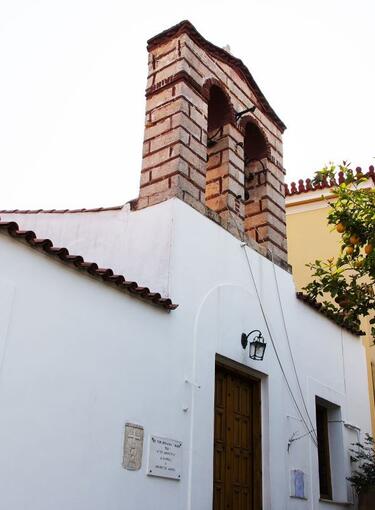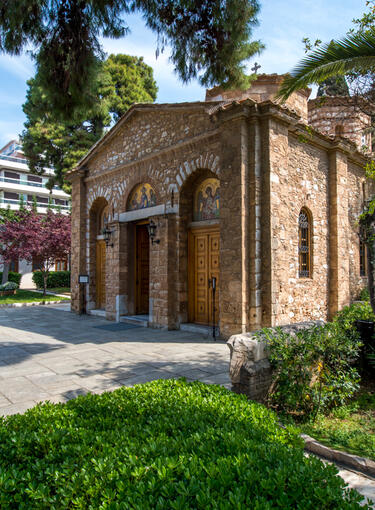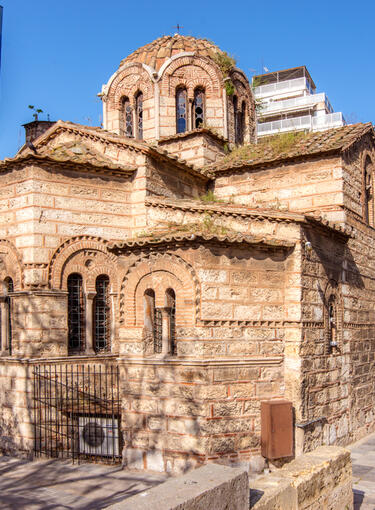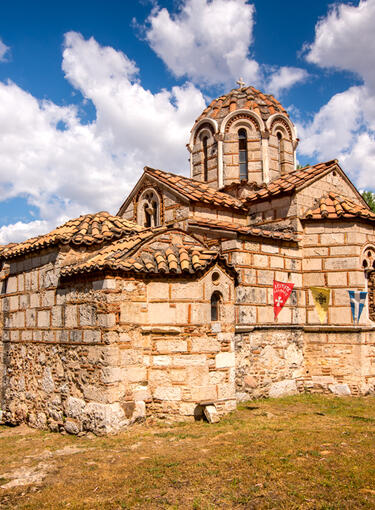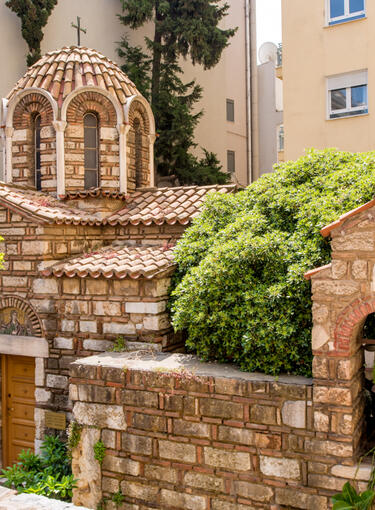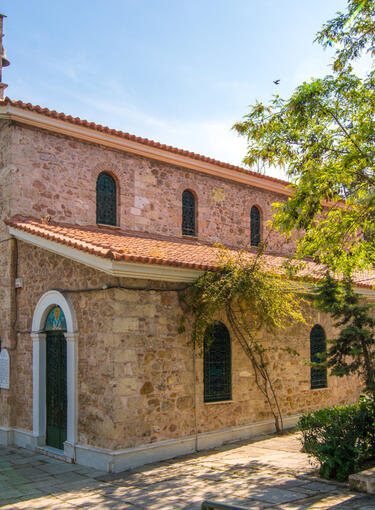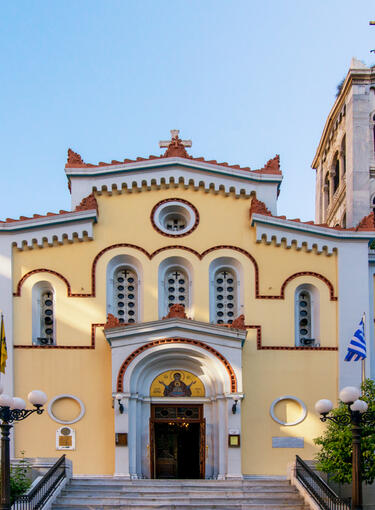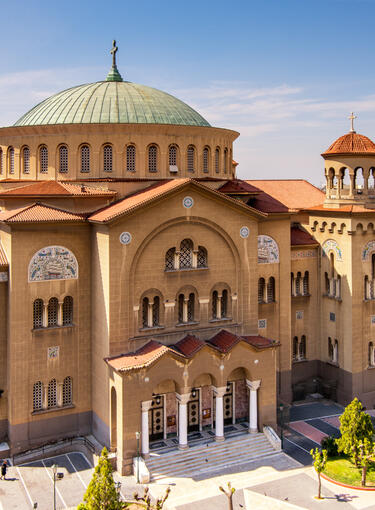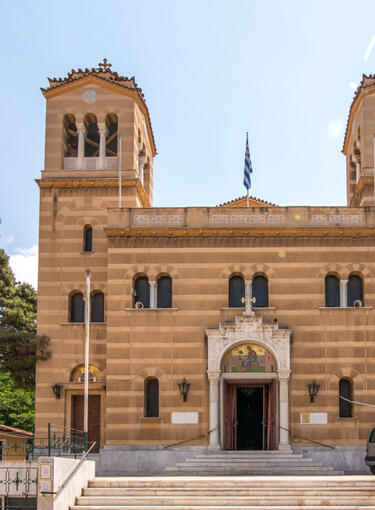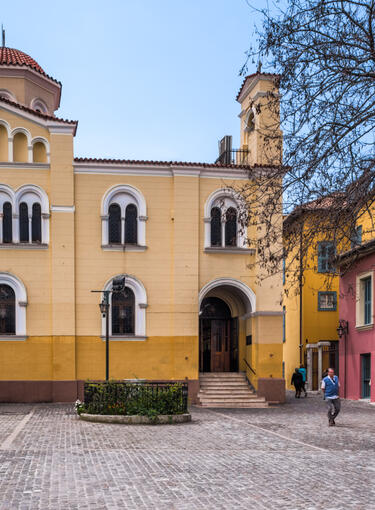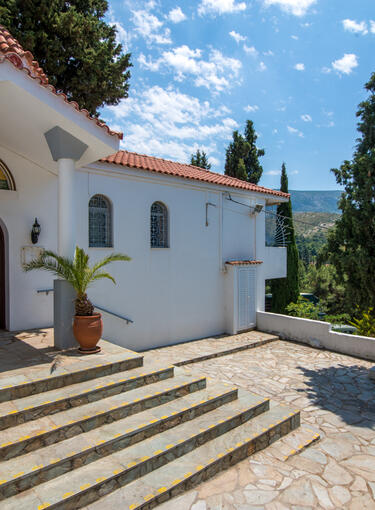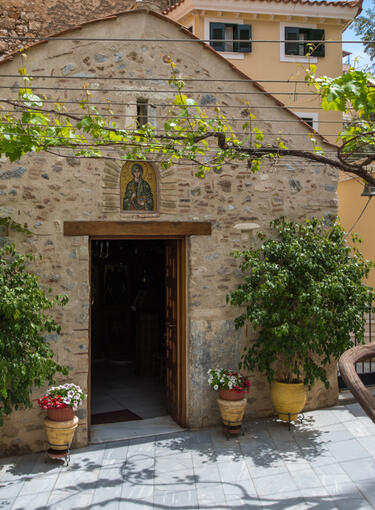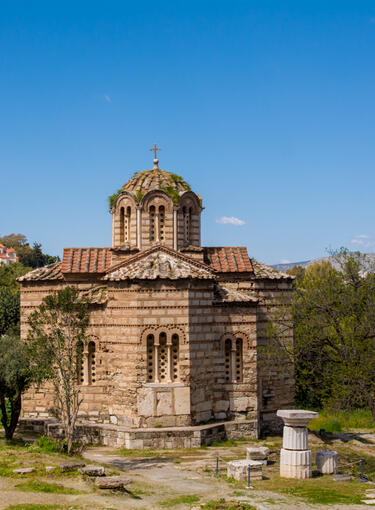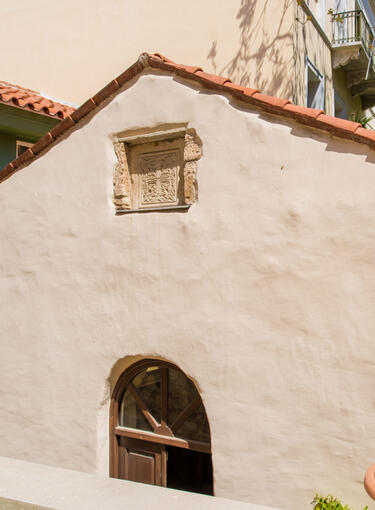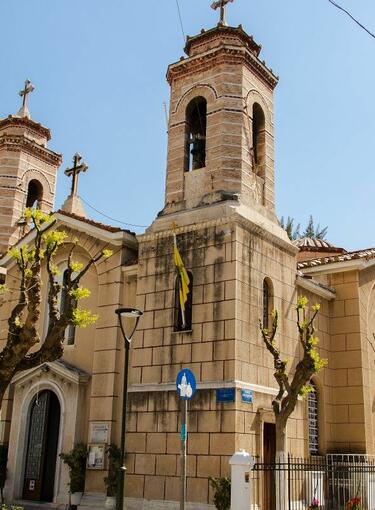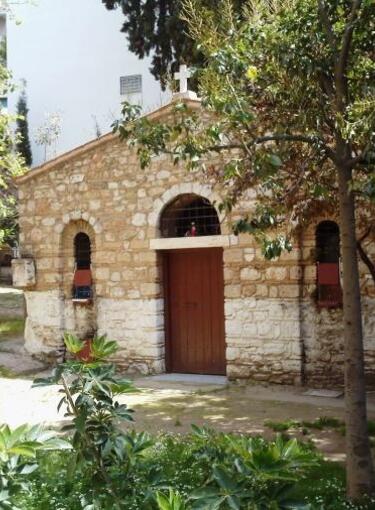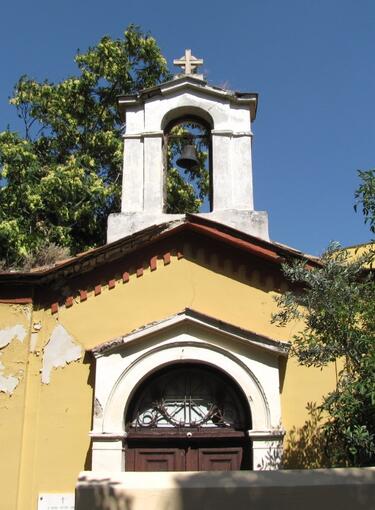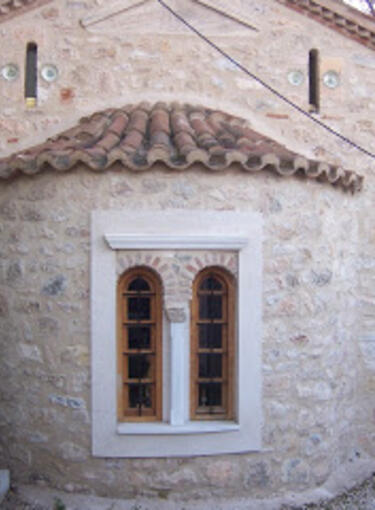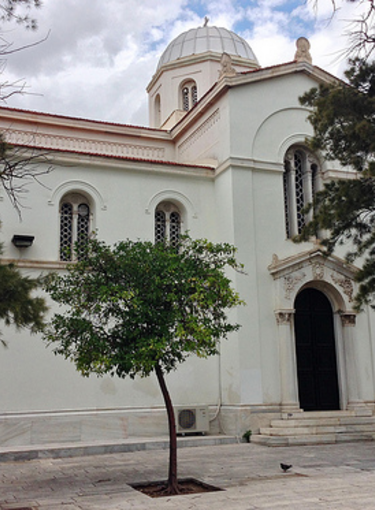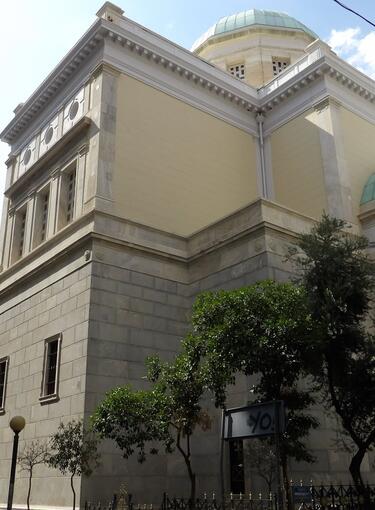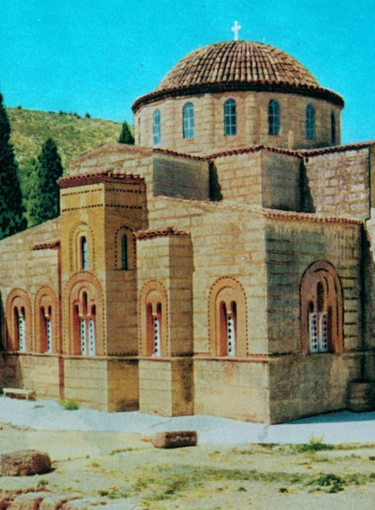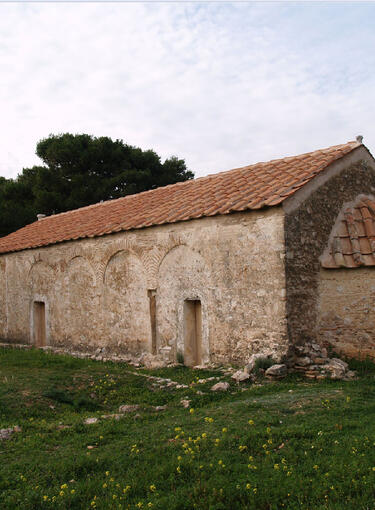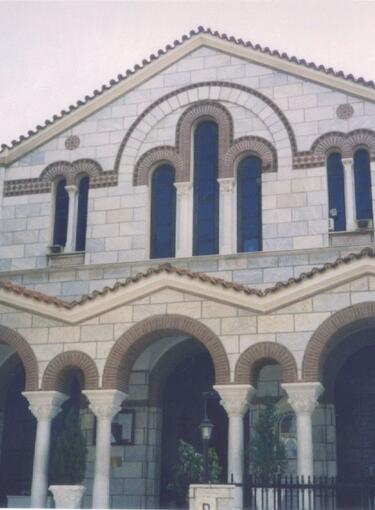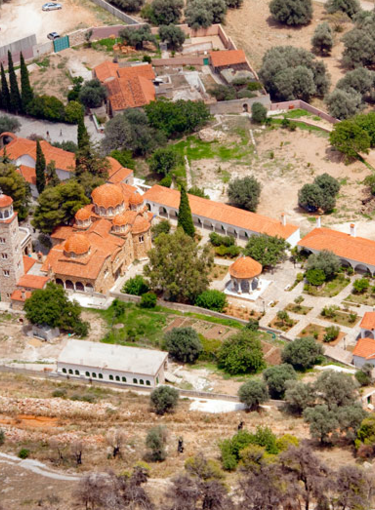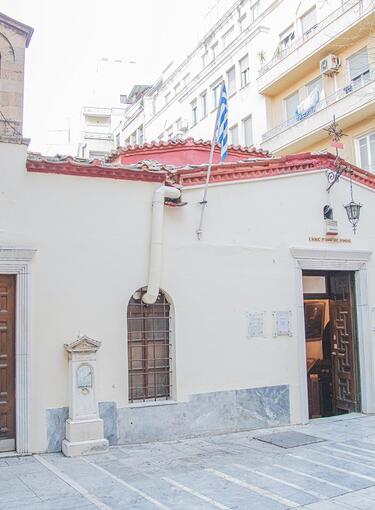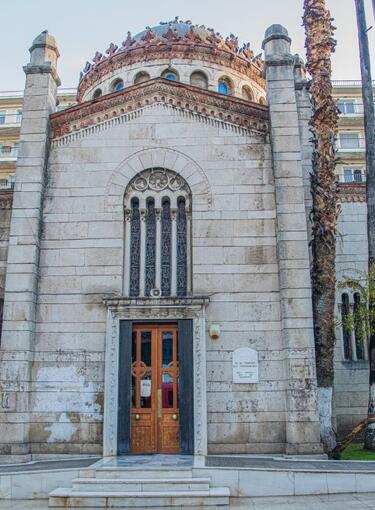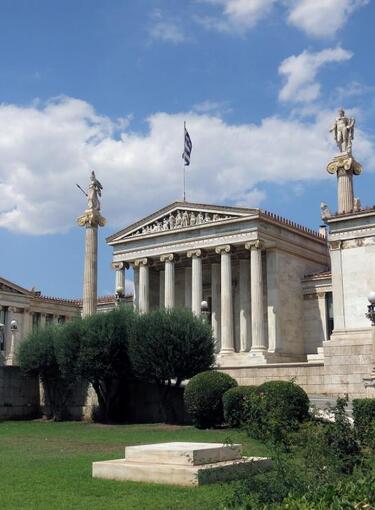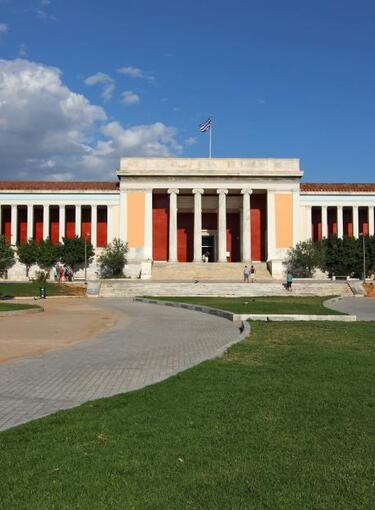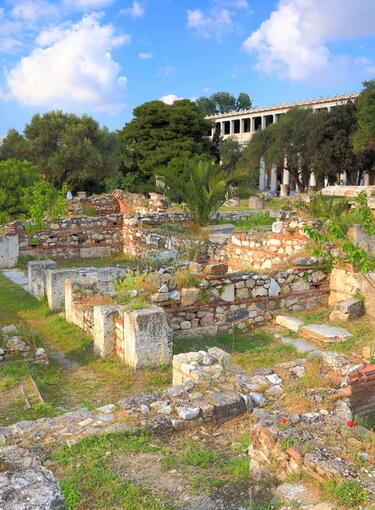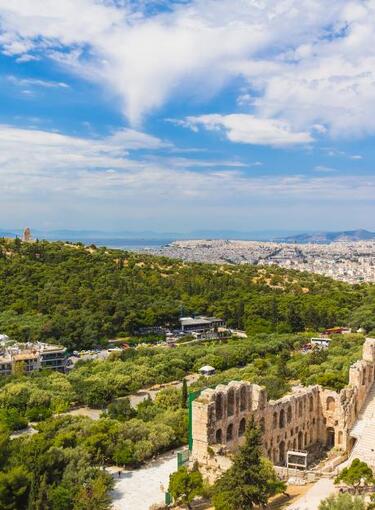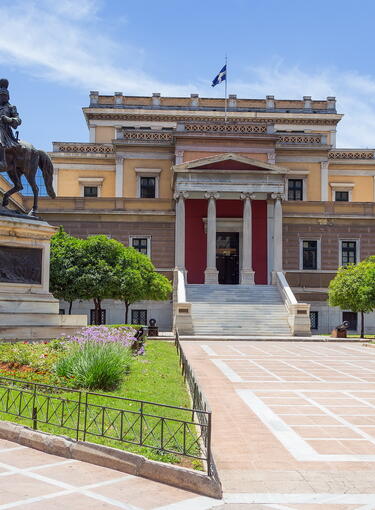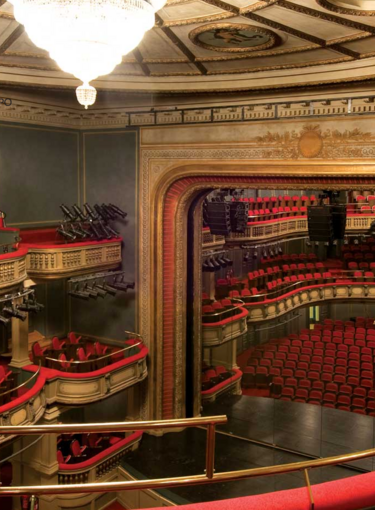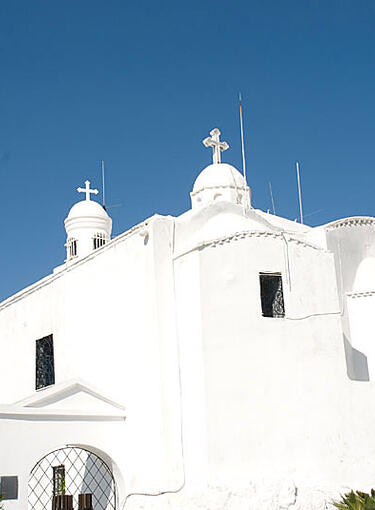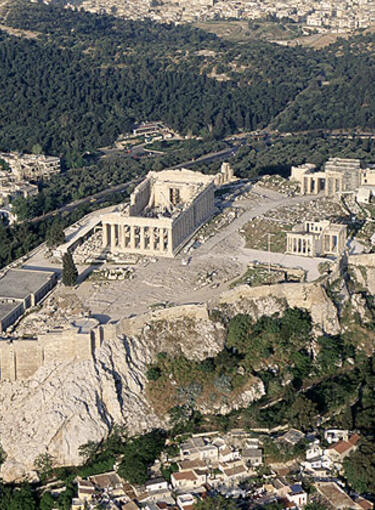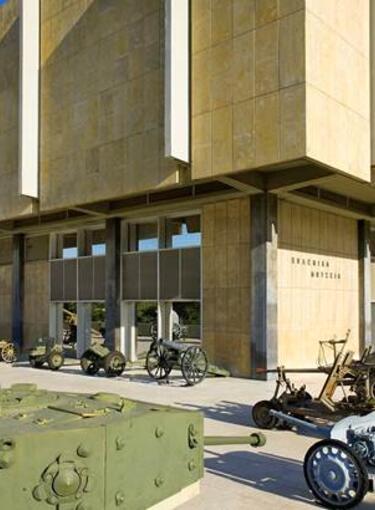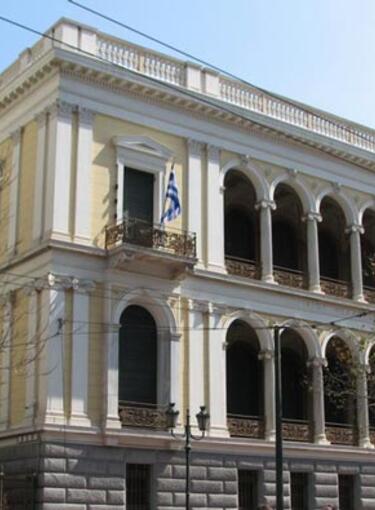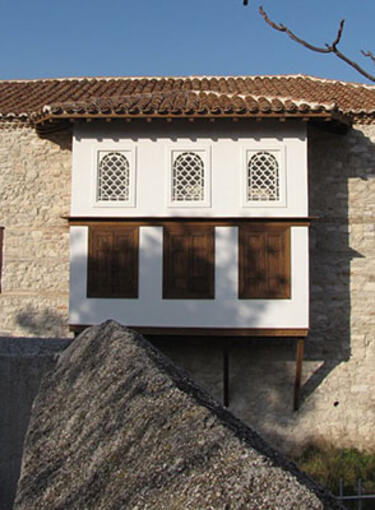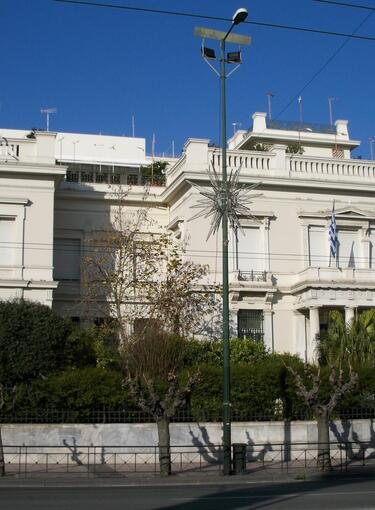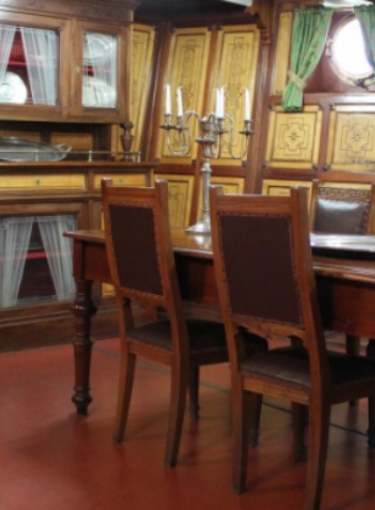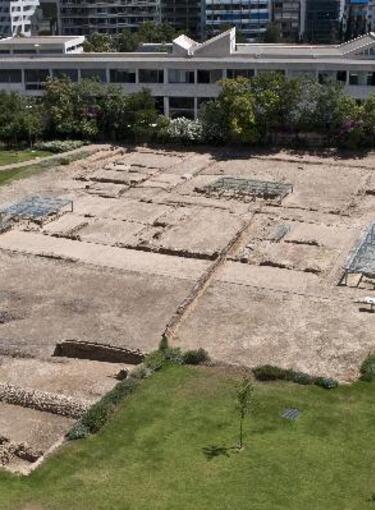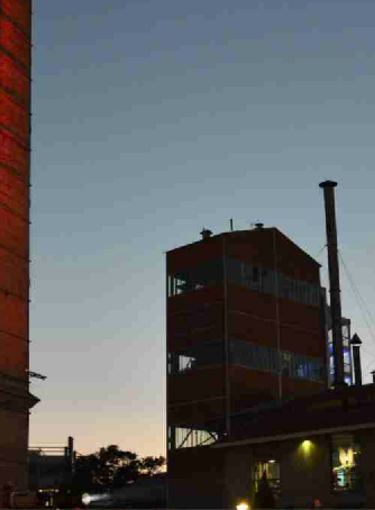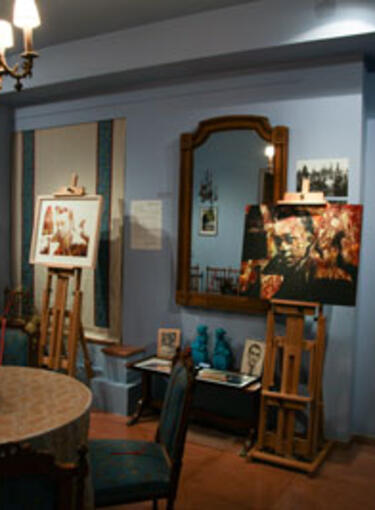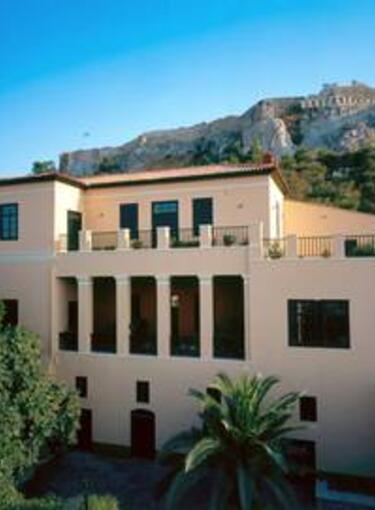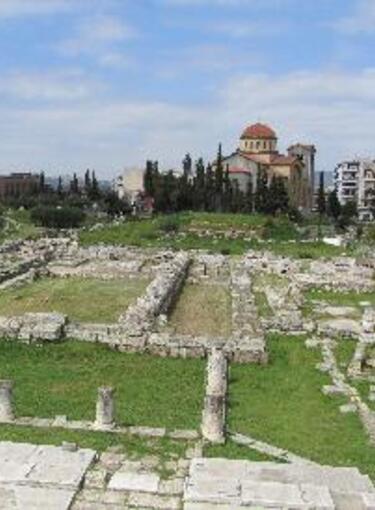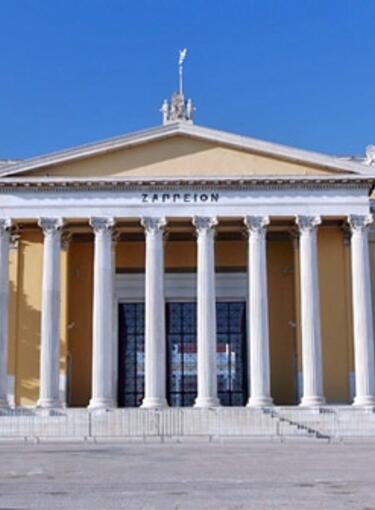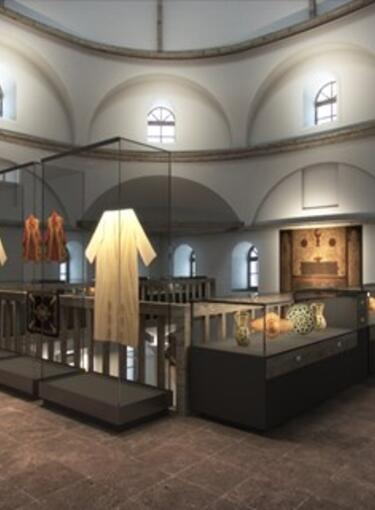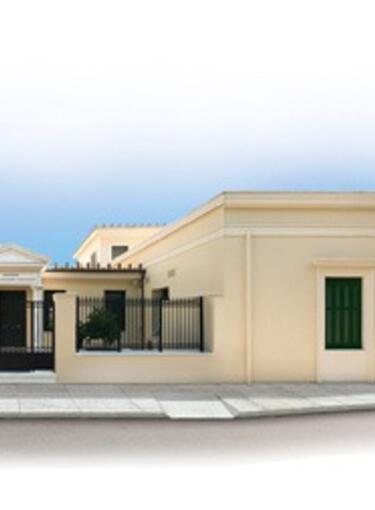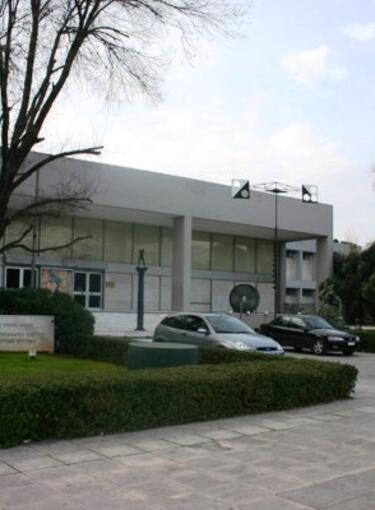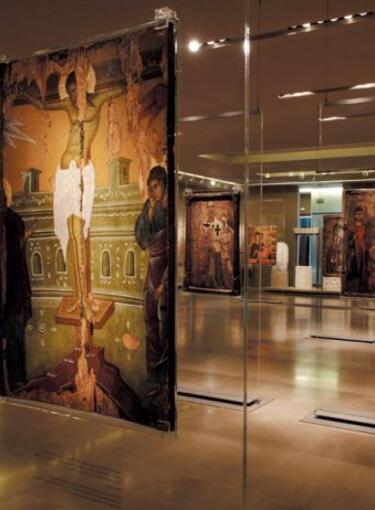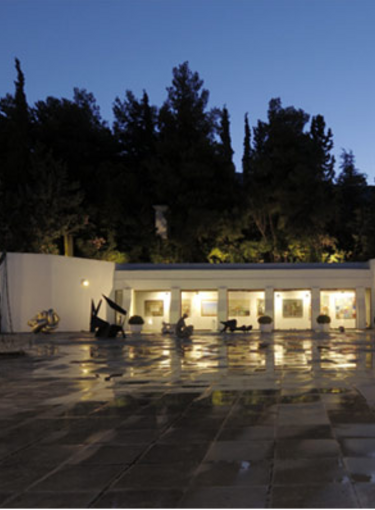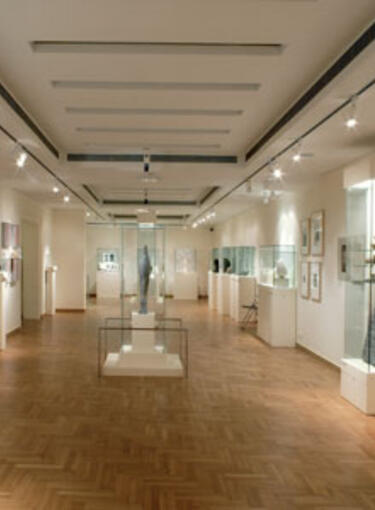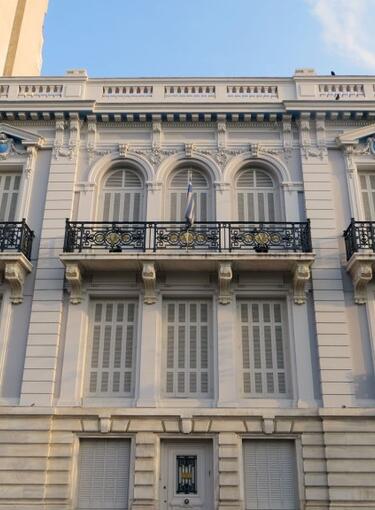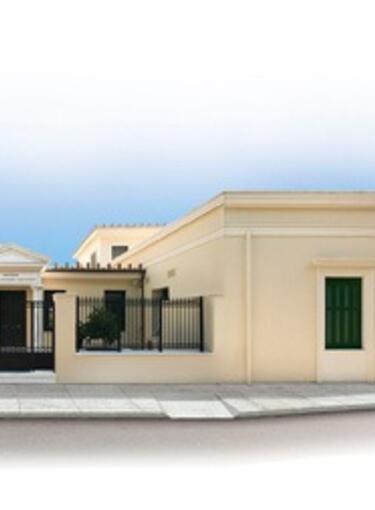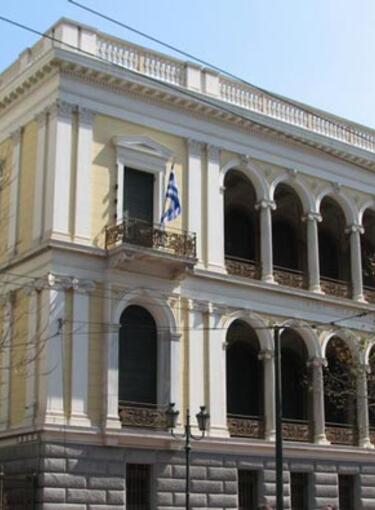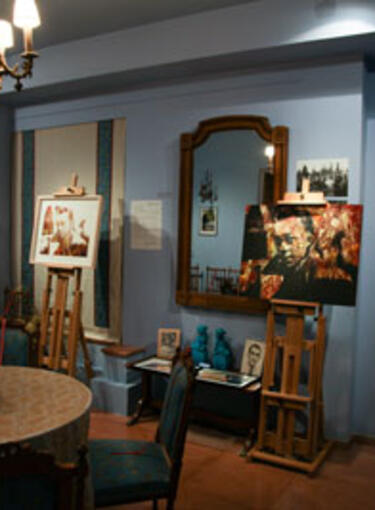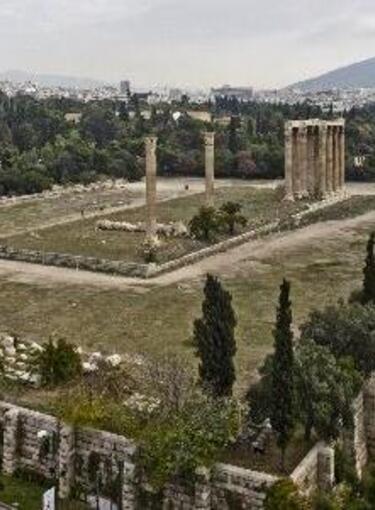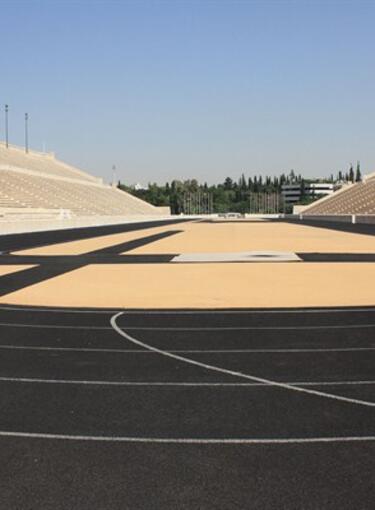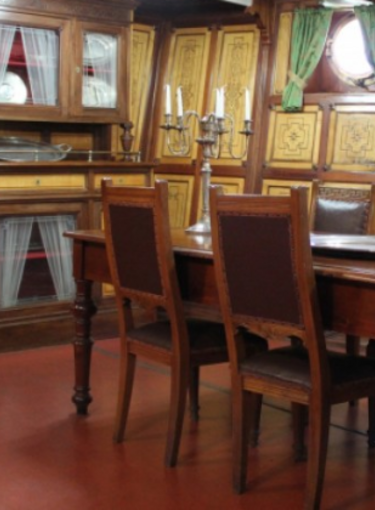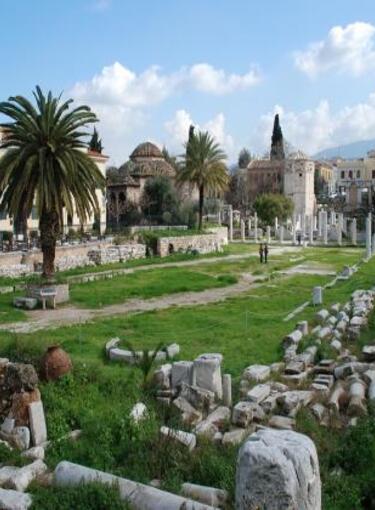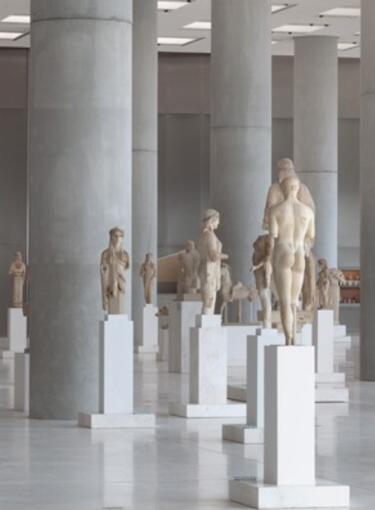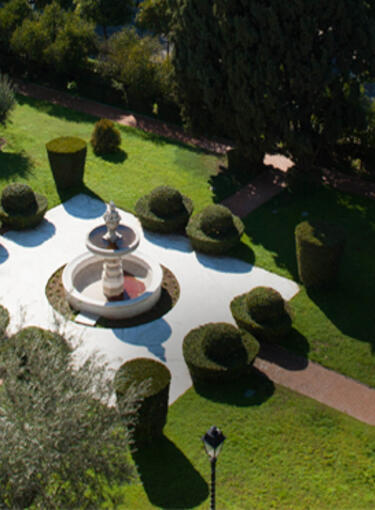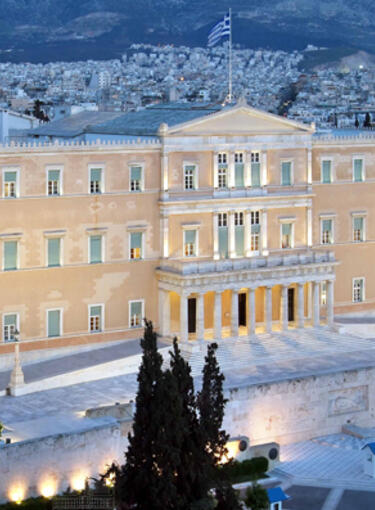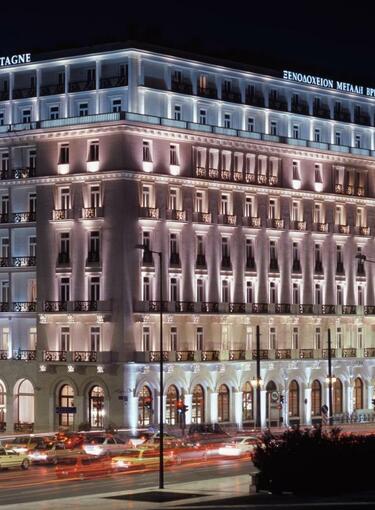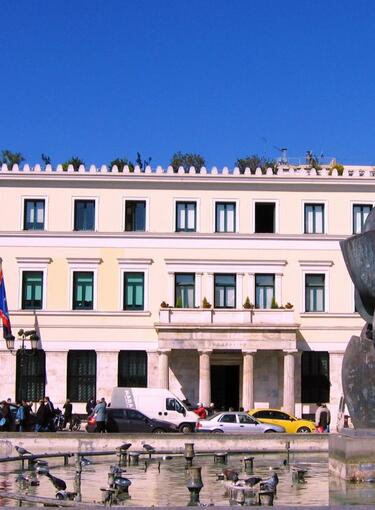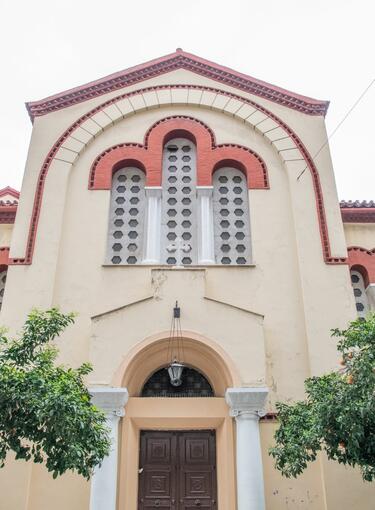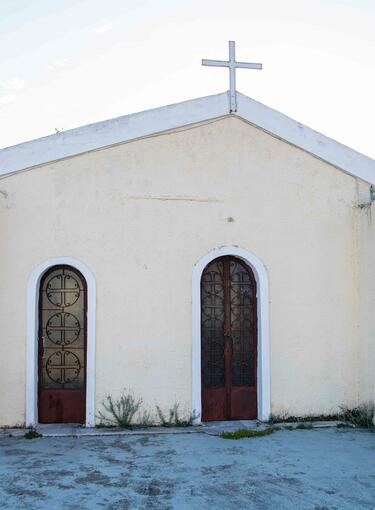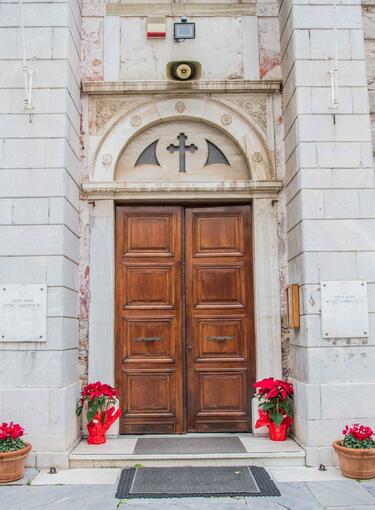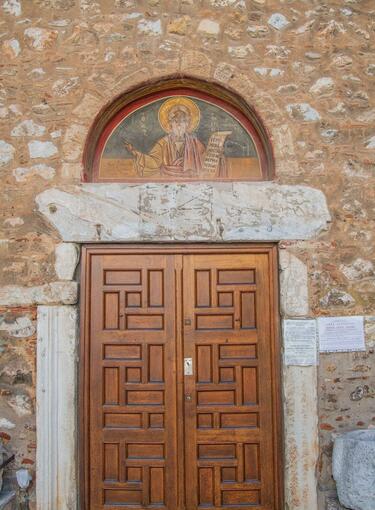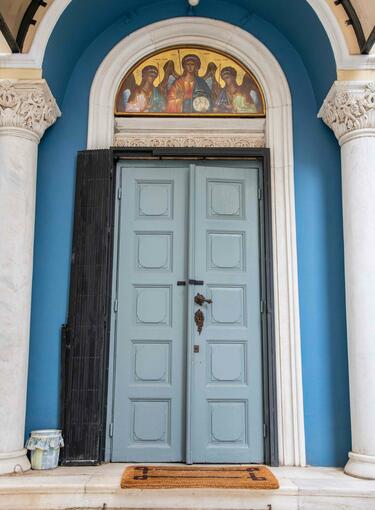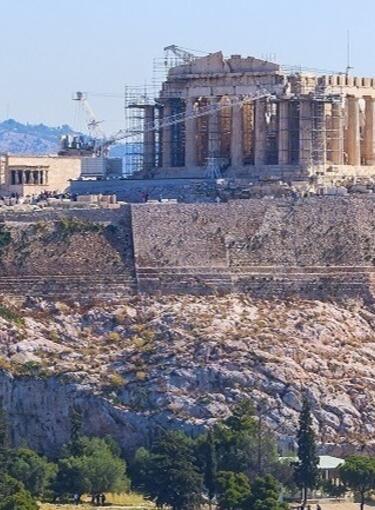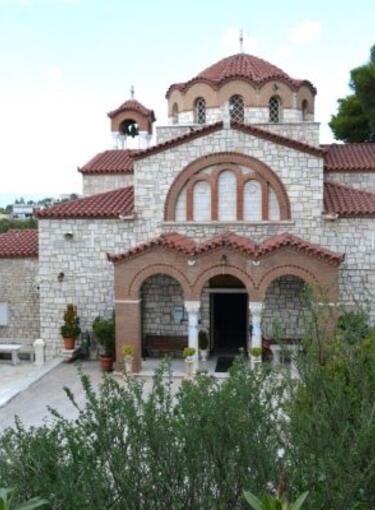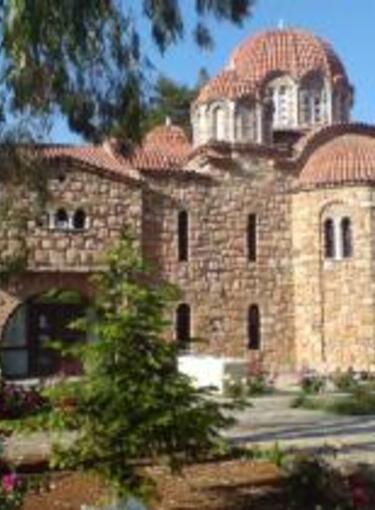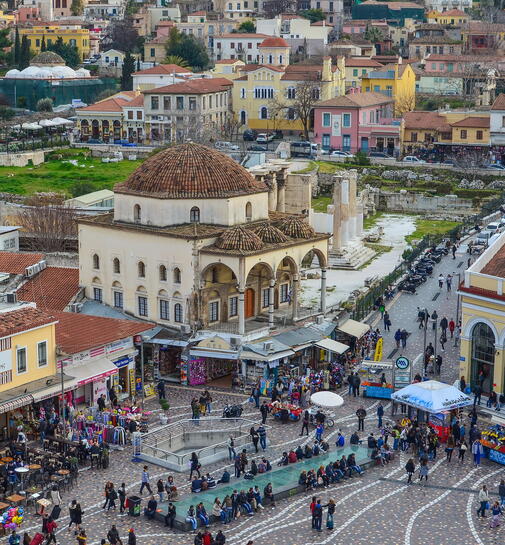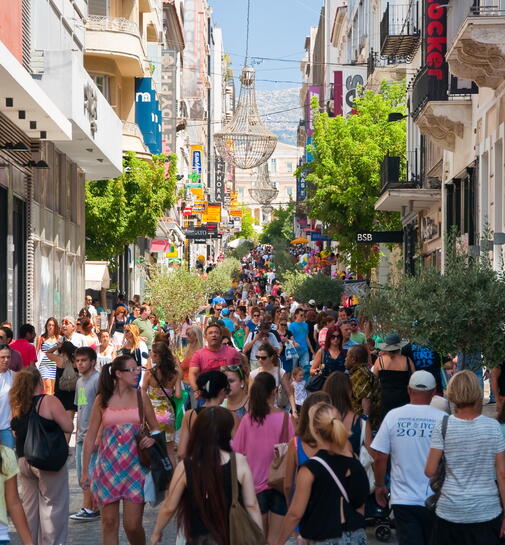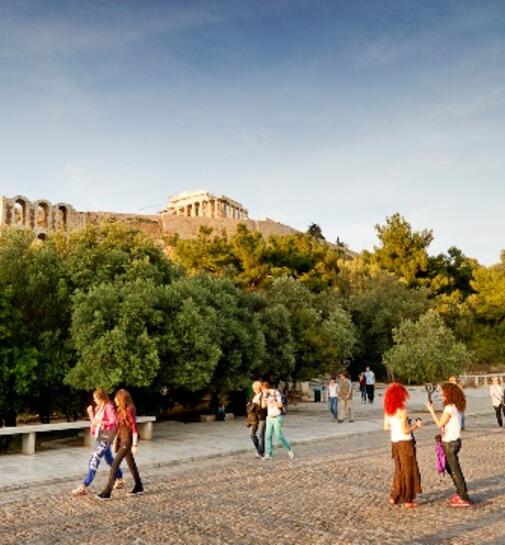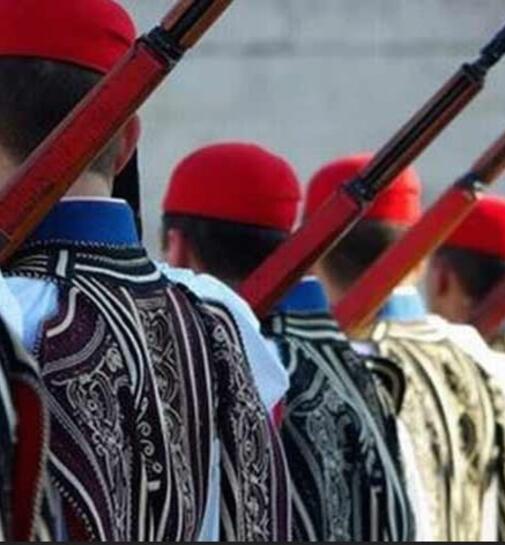Historic Temples
At the centre of Athens, at Filellinon street, amidst tall modern buildings stands the impressive church of Sotera (Saviour) Lykodemos, which is also known as Agios Nikodimos or the Russian church. It is dedicated to Agia Triada (Holy Trinity) and is one of the most important Byzantine monuments in Athens and at the same time the centre of the Russian community in the city.
The church was constructed in the beginning of the 11th century over Roman baths, which during the Early Christian period has been converted into a basilica. Important information regarding its history we can draw from the 21 engravings on its walls, which were recorded and published by the archimandrite Antoninos in 1874. From these, two stand out, on the southwestern corner, as a matter of fact one refers to the death of the first founder of the church and provides the date 1031.
The church was the catholicon of a monastery and suffered serious damages at its western part from a cannon ball during the siege of the Acropolis by the Venetian general Morosini, in 1687. In 1705 it suffered new damages from an earthquake. While in 1778 the Turk voivode Hatzi Haseki demolished the surrounding wall of the monastery in order to use its material for the construction of the wall of Athens. It suffered large destructions during the Revolution when the Turks hit it with their cannons from the Acropolis. In 1847 the church as given to the Russian community for serving the worshipping needs of the Russian people and then major restoration works began and the Russians covered the expenses.
Architecturally it belonged to the so-called “continental octagonal” type, in which the large dome is supported by four pairs of pillars. On the east there is a tripartite bema and on the west a narthex. It is constructed according to the cloisonné system of masonry and in some spots it is decorated with dentil courses and pseudo-cufic patterns that mimic Arab letters. The tall bell tower on the northwestern corner, which resembles the Byzantine masonry of the church, was added by the Russians in the 19th century. The interior of the church was decorated with remarkable wall paintings, which were made by the Bavarian Ludwig Thiersch (1825-1909), professor at the Athens School of Fine Arts, who introduced to Greece the naturalistic Nazarene movement, which is quite different from the principles of the Byzantine tradition. The built screen of the church is heavy and tall, and was also constructed by the Russians as well, on the location of the older Byzantine one.
Church of the Holy Trinity [Naos Agias Triadas] (Filellinon Str.)
At the centre of Athens, where Filellinon street meets Amalias Αvenue, looms the church of Virgin Mary Soteira Lykodemou [‘Saviouress of Lykodemos’] or as it is widely known, the Russian church of the Holy Trinity. Beset by grand buildings, the church has lost nothing of its splendour thanks to its size, architecture but also the legends accompanying it.
The legends are related to the catacomb located underneath the church, with its staircase ending up at the entrance of a network of galleries radiating from the centre of the depths of Syntagma Square. Following the catacombs of Holy Trinity, one will come across traces and relics of the ancient history of the city of Athens as well as spaces which functioned as ossuary.
According to the Archeological Service, at the site on which the church was selected to be erected, a teaching school existed, dedicated to Apollo Lykeios while during the Imperium Romanum, in the era of Hadrian, the so-called ‘valaneion’ [balneum, bathhouse] was housed, namely the Roman baths, which were water-supplied by a tributary of the Eridanos river.
In Byzantine times, during the emperorship of Irine of Athens (780-802, a small Christian church was built, with the present church being the ‘katholikon’, the principal church of the convent.
During Francocracy, and until 1669, the convent passed to the control of the Roman Catholic Benedictine monks and, in turn, was reinstated to the hands of Orthodox monks.
In 1778, the Ottoman governor of Athens Hadji Ali Haseki, demolished the monastery in order that the materials be used for the erection of a fortification wall. The katholikon was the only site that survived and thereafter became a metochion (dependency) of the Kaisariani Monastery.
During the Greek Revolution, the Church sustained huge damage, with a part of the dome as well as the largest part of the northeastern façade of the church having collapsed.
In 1847 the interest of the Russian embassy is being directed to the Church of Nikodemos, as was, then, known the Church of Soteira of Lykodemus and it requests its concession by the Hellenic Government in order to cover the devotional needs of the Russian community of Athens. The request is accepted and the church is conceded to the Russian community. A seminal role in this history of this Athenean monument was played by the Archimandrite and Professor of the Kiev Theological Academy, Antonin, with whose mediation the church was not demolished, as it had initially been proposed, but it was reconstructed.
The reconstruction of the church was completed in 1855, against the expenses of the Russian state. During the works, the old marble templon was replaced by a new taller one and the present bell tower was erected, which overlooks, even on this day, on the courtyard of the church according to the models of Byzantine bell towers.
Despite that, generally speaking, the monument was restored to its ancient form, it was deemed as necessary to make some modifications, such as the closing of external openings and the building of walls at the three sides of the central square of the church, aiming at the better support of the arches, which carried the dome.
This is a church of Byzantine octagonal style with a narthex and a gallery over the side aisles. In an octagonal style, the large dome covering the entire central space of the church, rests with its low drum on eight arches which, when branching out, form an octagon. In this manner, the weight of the dome is divided to arches, barrel-vaults and piers which, in turn, are borne by the internal walls forming a square with the cross arms of the inscribed cross and carry the weight of the dome. The main space of the church appears as unified, undivided while the pilgrim, already at the entry of the church, can discern the dome decoration.
The walls of the church are built with the typical cloisonné masonry, where four-sided white stones, unusually of porous stone are framed by thin red bricks. At the northern and western side of the church, one can observe a frieze of plinths with cufic decorations (namely engraved decorations which imitate letters of the paleo-Arabic alphabet) framed with dentic courses. A respective cufic frieze exists also in the bell-tower.
At the eastern side of the church, there are three apses which externally give the impression of the triconch, while internally are semicircular. At the central conch of the Holy Bema, a triple–light window imposes itself, while the height of the gallery is lit by single-light windows in all of its three sides. At the western side, one meets the main rectangular gate of the church, on both sides of which there are two smaller gates with marble frames. Over the gates, three apsidal windows are formed, which are inscribed by the brick arches. There are two corresponding gates also at the northern but also the southern side.
With regard to the wall painting decoration of the church unfortunately, the old decoration did not remain unharmed by the bombardments by the Ottomans in 1821. The current, western style Christian painting, which constituted a part of the extensive restoration works by the Russians, is the work of the Professor of the Athens School of Fine Arts in Athens, Ludwig Tiers (1825 – 1909) while, noteworthy is the depiction of Apostle Paul with the features of King Otto.
The niche is occupied by the enthroned Platytera, while the Pantokrator dominates the dome. On the pessaries, within rectangular frames, the Fathers of the church, saints and hierarchs of the church of Athens, as well as Athenian martyrs (Agia Christina and Agia Dareia) are depicted. As for the iconographic program of the iconostasis, it is articulated in three zones.
Last, significant are the heirlooms of the church, such as icons or even holy vestments which were transported by the Russians to Athens following the 1917 revolution. A special position, among the heirlooms safekept in the Church, is held by the portable icon of Agios Nikolaos (Saint Nicholas), a gift of Queen Olga during her pilgrimage visit at the church in 1891.
Informations
Additional
Date:
early 11th century
Season:
Byzantine
Holy Metropolis:
Archdiocese of Athens
Under the Supervision of:
Ephorate of Antiquities of Athens
Address:
Philellinon
Access:
Syntagma Metro Station


